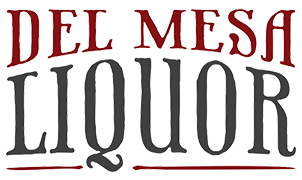Wines have long been regarded as a pricey indulgence in many societies, and their costs vary widely depending on various factors. The most expensive wines are typically those produced in small quantities or from renowned regions like France, Italy, and California.
In addition to the type of grapes used, the method used to make the wine, how old it is, and even the shape of the bottle, all of these factors affect how much a bottle of wine costs. In addition, tequila brands with better reviews and accolades are frequently more expensive.
In summary, several elements, including region, quality, production method, and awards, affect how much a bottle of wine costs.
Characteristics of an Expensive Wine
Wine is a sophisticated and pricey beverage, and because there are so many different types, it can be challenging to comprehend why some wines are so expensive. Five factors primarily affect the price of wine and potential investment value: the producer, limited supply, vintage, durability, and critical ratings.
Understanding the qualities that make a wine more expensive can help you decide which wines are worth the extra cost, even though numerous factors can affect the price of wine, such as rarity, production costs, and quality.
Expensive wines stand out from other wines by having particular qualities. In search of that $5 wine that tastes like a $20 bottle or the $15 wine that could easily pass for a $100 bottle, you have spent a lot of time browsing your neighborhood wine shop. Why is wine so expensive in the first place? And are these parts genuine or counterfeit?
Factors Driving Up Wine Prices

1. The Restaurant Tag
In most cases, brand names are problematic. You can host a dinner or go out with anyone. But what if the wine you are buying is pricey? What if your liquor is inexpensive on any given occasion?
Spend money on pricey, difficult-to-find items, or go the other way around and ask your sommelier to recommend something from a small, obscure winery, and you can save some money.
Always keep an eye out for behind-the-label tactics to cut costs because the more significant the label name, the higher the price, and the more expensive the bottle is, to begin with, the lower the markup.
Another element in determining an expensive wine is the reputation of the producers. Wines made by well-known winemakers for their high-quality output are typically more costly than those made by less prominent winemakers.
2. Rarity
One of the primary elements that can raise the cost of wine is a rarity. Age, a small production, or several bottles from a specific vintage are examples. For instance, older wines are generally more expensive because they are rarer and frequently have more complex flavors.
The cost of wine may also be impacted by its limited production. Some winemakers only make a small number of bottles, which can make them more expensive and difficult to find.
This is particularly true of wineries that create small quantities of premium wines, like those from the Burgundy region of France.

3. Manufacturer
Of the more than one million wine producers worldwide, only 250 to 350 are considered to produce wine that will hold its value over time. Authentic investment-grade wines are typically made in France, Italy, and California.
Screaming Eagle and Harlan from California, first-growth wines from Bordeaux like Lafite and Mouton, Burgundy like Leroy and DRC, and DRC are examples of investment-grade wines.
4. Scarcity
Whatever the quality of the wine, it will eventually deteriorate because it is an organic product. Wines may become challenging to find for one of two reasons: either there was a small initial production due to the producer or a specific vintage, or they are consumed over time and become less accessible.
5. Excellence
Another element that can increase the cost of wine is its quality. Higher-quality wines are typically produced with more excellent care and attention, giving them a more complex flavor. This may entail the use of grapes with higher quality as well as more expensive production techniques.
For instance, some wineries may use more expensive fermentation techniques or age their wines for more extended periods in more costly barrels. As a result, the wine may become more flavorful and complex, increasing its price.
6. Antique
Vintage might be the most crucial element in producing a great wine. Due to grapes' complexity and delicate nature, even minor weather variations can make or break a vintage. The perfect wine balance is challenging to achieve and can vary significantly from year to year.

7. Locality
The cost of a wine can also vary depending on where the vineyard or winery is located. Due to the superior quality of the grapes grown in a particular region, such as Burgundy or Bordeaux in France, certain wines tend to be more expensive.
The lengthy and intricate history and tradition of the wines from these regions can also increase their cost. Additionally, because the climate and soil in some places may not be optimal for growing grapes, wines from those places may be harder to find. Because of this, it might be more expensive and harder to find.
An expensive wine can be affected by the region where the grapes are grown. Like Burgundy or Napa Valley, wine-producing areas with a solid reputation are typically more costly than other places.
8. Ranks
The truth is that wine ratings matter and impact the value of wine, even though many wine purists despise them. Renowned critics like Robert Parker continue to affect the prices of wine and its collectibility with even minor changes to scores.
A 10-year retrospective of Robert Parker tasting focused on the 2005 vintage, which saw some scores increase from 98 to 100. Both Angelus and Pavie noticed the additions that quickly increased the value.
9. Variety of Grapes
Wines that are more expensive than others can be made from grapes from specific vineyards and geographical areas. Highly prized varieties like Cabernet Sauvignon and Pinot Noir are typically more costly than other varieties.
10. Production of Wine
The high price of wine may vary depending on the winemaking process. For instance, some wines may be more expensive than others if they are aged in expensive oak barrels.

11. Age
When determining an expensive wine, the age of the wine can play a role. As a result of the years of aging, older wines may be more intricate and complex and cost more. Red wines are the only type of wine to which this adage applies, and older wines cost more than younger wines.
The overall flavor of the fruit in a glass of wine changes as it ages and starts to lose its freshness. With time, the tannin and acidity of wine also decrease. Aged wine in a barrel for a while may taste more delicately stewed and dried fruit-like. If you drink an older wine with less tannin and acidity, it will be smoother and more flavorful.
12. Branding
The branding of wine can have an impact on its cost. Particular products of wineries, like those from Bordeaux or Burgundy, are highly prized and can be pretty pricey. This can be due to the reputation of the winery and the quality of its wines, and its ability to market its wines effectively.
Additionally, the packaging or labeling of certain wines may make them more expensive. Some winemakers may use more costly corks, labels, and bottles to give their wines a more opulent appearance, which may raise the price of the wine.
13. Durability
The vintage of a wine and its anticipated value are directly correlated. Long shelf lives are every day for great vintage wines; one of the best years for production was 1945. Learn by investigating the top ideas that a few renowned bartenders and professionals suggested for a better experience.
14. Barrel Type
Another essential element determining whether the wine is inexpensive or expensive is the barrel used for the fermentation process. After interacting with oxygen, wines aged in oak barrels frequently acquire fruity or woody notes, giving them an additional flavor that distinguishes them from other wines.
On the other hand, products aged in steel drums might not reach this depth, so their price tags might be lower. Although oak will always be more expensive than steel, high-quality wine can still be produced in steel barrels.

Final Remarks
There are many reasons why wine is so expensive, and it is frequently regarded as an expensive luxury good. The quality of the grapes, the soil, and the climate influence the overall flavor and quality of the wine.
Many wines need to age for a long time before they can be sold, which requires patience during aging. The price of wine is also influenced by the cost of labor, the cost of production, and the cost of taxes. The final factor that can raise the overall cost is wine marketing and packaging.
Before you immediately put that inexpensive bottle of wine back on the shelf, consider why some bottles of wine cost as much as selling a kidney while others can be bought for as little as the spare change in your pocket.
You might think some wines are older than others or made with better ingredients. Value is a purely arbitrary concept. You might find that an expensive bottle of wine gives you a lot of pleasure, or you might find that any bottle that costs more than $20 gives you as much entertainment.
We enjoy wines of all prices, but we must admit that when someone else purchases or is required to provide a bottle of wine as a gift to our loved ones, we genuinely prefer the priciest ones.
 Log in
Log in
 My Wishlist
My Wishlist Reward Program
Reward Program Corporate Gifts
Corporate Gifts Customer Help
Customer Help


